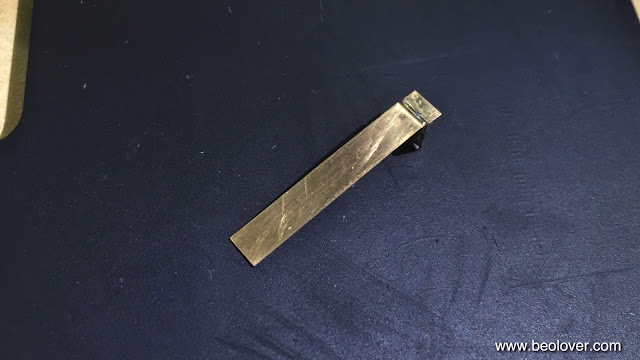One of my customers expressed interest in acquiring a Beogram 4000 that I restored last year (this link will bring up most of my last year's posts on this Beogram 4000). One item left to do was to gold plate the contact terminals in the switches that determine the carriage position and the switches in the keypad. In my experience about 90% of all faults with the 4000 can be traced back to issues in these mechanical switches. They determine the states of the control system and the malfunction of just one of them can cause severe operational issues with the 4000. Hence, gold plating and straightening them out is a great idea if long-term stability is desired.
This operation requires to extract all contact terminals from the switches. This is a somewhat painful procedure since the terminals are inserted into the PCBs with spring loaded solder connections. Getting them out makes one wish that humans were outfitted with at least three arms and hands. But patience and skill can make up for that. So, let's go for it!:
This shows the keypad PCB removed from the keypad assembly:
The contact terminals appear black and oxidized. This shows them after removal:
And after electrochemical gold plating:
And yes, you counted correctly!: I forgot to take one out for these pictures...there are eight in total in the keypad...;-). Here is the final one:
Looks pretty bad, doesn't it?? After plating:
Much better, isn't it??
After straightening all of the terminals into their original shape I re-implanted them:
Very pretty! This is Beolove!
After this I put the keypad back together and tested it. To my frustration the reverse scanning function had trouble to activate fast scanning, indicating that the secondary on-position of the respective switch was not activated reliably. I had this issue before. There is a design issue with the switches in that the actuator is sometimes not long enough to allow the reliable activation of the fast scanning function. This mechanical issue can be alleviated by adding a bit of length to the actuator. I usually do this by putting a small dab of epoxy glue on the end of the actuator:
This solved the problem.
On to the carriage position switches. These switches are responsible for activating arm lowering or end groove detection etc...This shows them in their original condition:
Probably the most black and oxidized terminals I saw so far. I removed them
polished them with some 2000 grit sand paper:
and then gold plated them:
After reinstalling a much different picture:
I replaced the PCB and tested the Beogram: Perfect function! All good now in the switches department!












How do you gold palted them.
ReplyDelete